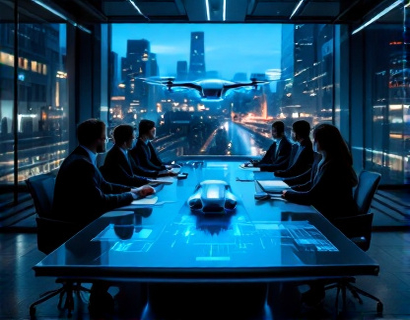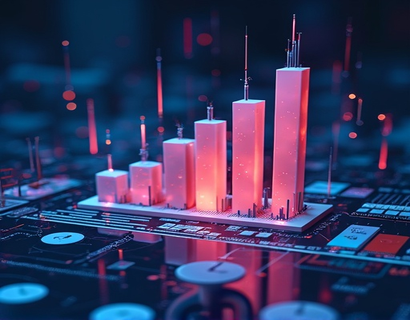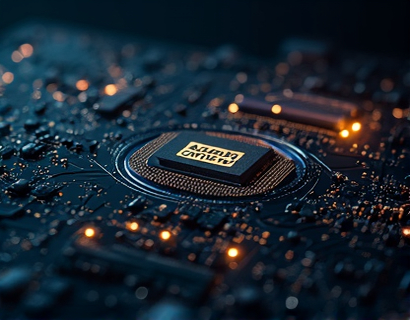Aerospace Technology Breakthroughs: Pioneering Efficiency and Safety Advancements
The aerospace industry stands at the forefront of technological innovation, continuously pushing the boundaries of what is possible in both aviation and space exploration. Recent breakthroughs in aerospace technology have significantly enhanced efficiency and safety, setting a new standard for the industry. This article explores the latest advancements that are reshaping the future of aerospace engineering, offering industry leaders and visionaries a forward-looking perspective.
One of the most significant advancements in aerospace technology is the development of more efficient propulsion systems. Traditional jet engines have been improved through the integration of advanced materials and aerodynamic designs, leading to reduced fuel consumption and lower emissions. For instance, the use of composite materials in engine components has allowed for lighter and stronger parts, which in turn improve fuel efficiency. Additionally, the adoption of open rotor engines, which feature large fans at the front and back of the engine, has shown promising results in reducing fuel usage by up to 20% compared to conventional engines.
Another critical area of innovation is in the realm of electric and hybrid propulsion systems. Electric propulsion offers the potential for quieter, more efficient, and environmentally friendly aircraft. Companies are developing electric motors and batteries capable of powering small to medium-sized aircraft, with some prototypes already demonstrating impressive performance. Hybrid systems, which combine traditional jet engines with electric motors, are also being explored to provide the benefits of both technologies. These advancements not only promise to reduce operational costs but also minimize the environmental impact of aviation.
In the domain of avionics, the integration of advanced sensors and artificial intelligence (AI) is revolutionizing flight operations. Modern aircraft are equipped with sophisticated sensor systems that provide real-time data on various parameters such as weather conditions, aircraft health, and navigation. This data is processed using AI algorithms to optimize flight paths, reduce fuel consumption, and enhance safety. For example, AI-driven predictive maintenance can identify potential issues before they become critical, allowing for timely repairs and minimizing downtime. This not only improves safety but also increases the overall efficiency of flight operations.
The use of unmanned aerial vehicles (UAVs) or drones is another area where aerospace technology is making significant strides. Drones are being utilized for a wide range of applications, from cargo delivery to surveillance and environmental monitoring. The development of autonomous flight systems and advanced navigation technologies has made drones more reliable and versatile. Autonomous drones can operate in complex environments, reducing the need for human intervention and enhancing safety. Moreover, the use of swarms of drones for tasks such as search and rescue or agricultural monitoring showcases the potential of this technology in various sectors.
In space exploration, the focus has shifted towards more sustainable and cost-effective missions. Reusable rockets, such as those developed by SpaceX, have dramatically reduced the cost of accessing space. The ability to land and reuse rocket boosters has transformed the economics of space launches, making it feasible to conduct more frequent and ambitious missions. This technology has opened up new possibilities for satellite deployment, space tourism, and even the establishment of permanent human settlements on other planets.
Another groundbreaking development in space technology is the use of advanced materials for spacecraft construction. Lightweight yet incredibly strong materials like carbon fiber composites and advanced alloys are being used to build spacecraft that can withstand the harsh conditions of space while minimizing weight. These materials not only reduce the fuel required for launch but also enhance the durability and longevity of spacecraft. For instance, the use of heat-resistant materials in thermal protection systems has improved the safety and reliability of re-entry vehicles.
Robotics and automation play a crucial role in both aviation and space exploration. In aviation, automated systems handle a wide range of tasks, from pilot assistance during takeoff and landing to in-flight monitoring and control. These systems enhance safety by reducing human error and improving response times to critical situations. In space missions, robots are essential for conducting experiments, maintaining equipment, and even performing complex tasks in environments where human presence is not feasible. The development of more sophisticated robots with enhanced AI capabilities is set to further revolutionize these fields.
The integration of 3D printing technology in aerospace manufacturing is another significant advancement. Additive manufacturing allows for the creation of complex components with reduced material waste and shorter production times. This technology is particularly useful for producing lightweight parts with intricate designs that are difficult to manufacture using traditional methods. For example, NASA has used 3D printing to create rocket engine parts and satellite components, demonstrating the potential of this technology to streamline production processes and reduce costs.
Safety is a paramount concern in aerospace, and recent innovations have led to substantial improvements in this area. Advanced materials and design techniques have resulted in stronger and more resilient aircraft structures. For instance, the use of nanomaterials and smart materials that can self-heal or adapt to changing conditions is being explored to enhance the safety and durability of aircraft. Additionally, the implementation of redundant systems and fail-safes, powered by AI and machine learning, ensures that even in the event of a failure, the aircraft can safely continue its mission or return to base.
In the realm of aviation, the development of more efficient air traffic management systems is improving safety and reducing delays. Advanced radar and communication technologies, combined with AI-driven analytics, enable more precise tracking and coordination of flights. This not only enhances safety by reducing the risk of collisions but also optimizes flight routes to minimize fuel consumption and environmental impact. The introduction of unmanned air traffic management (UATM) systems is also paving the way for safer integration of drones into the national airspace.
For space missions, the focus on safety has led to the development of advanced life support systems for long-duration spaceflight. These systems recycle air and water, reducing the need for resupply and enabling longer missions. Technologies such as bioregenerative life support, which uses plants to purify air and produce food, are being researched to create sustainable living environments in space. Additionally, improved radiation shielding and protective measures are being developed to safeguard astronauts from the harmful effects of space radiation.
The collaboration between industry, academia, and government agencies is crucial for driving these technological advancements. Research institutions and private companies are working together to push the boundaries of aerospace technology, sharing knowledge and resources to achieve common goals. Public-private partnerships have been instrumental in accelerating the development and deployment of new technologies, ensuring that innovations reach the market faster and more efficiently.
Looking ahead, the future of aerospace engineering holds even more promise. The continued development of sustainable propulsion systems, advanced materials, and autonomous technologies will further enhance efficiency and safety. The exploration of new frontiers, such as lunar and Mars missions, will drive innovation and lead to breakthroughs that benefit not only space exploration but also industries on Earth. As the aerospace industry continues to evolve, it is clear that the next generation of technologies will play a pivotal role in shaping a safer, more efficient, and more sustainable future.










































